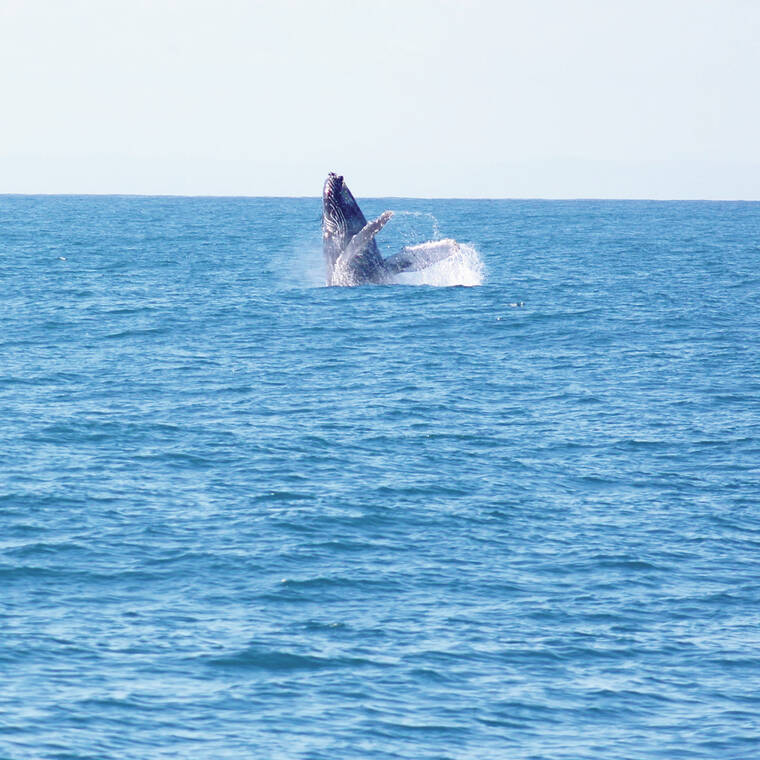WAIMEA — A number of boaters and on-shore on-lookers spotted some of the first whales off Kaua‘i this past weekend.
The first sighting was by Captain Cole Burton of Blue Dolphin Charters, who was out with a tour on Saturday, Oct. 2, heading west out of Waimea toward the Na Pali Coast when there was a breach, Assistant General Manager Shaye Clarke said.
Clarke said a few passengers saw the whale, so Burton turned the boat around and sat for a few moments to watch when the whale came up for another breath at 9:10 a.m.
Later that same day, Blue Dolphin Charters Captain Evan Hurd was out for a tour and spotted a whale around 3:35 p.m.
Then, during an evening tour, Captain Mike Lynch of Holo Holo Charters saw a baby humpback whale breach the water six times. Manning Holo Holo Charters’ vessel Leila, Lynch saw the baby about a quarter-mile off Nohili Point, the far western edge of the island just north of the Pacific Missile Range Facility.
“It’s always exciting to hear about the first whale sighting in Kaua’i waters, I am jealous I didn’t see it myself! We love sharing the waters with our annual visitors, now is a great time to get out on a boat to see them for yourself,” Holo Holo Charters’ General Manager Chandra Bertsch said in a release. “During peak whale season it’s almost impossible to not see a whale while on tour, so it’s a special treat for anyone on board during these early sightings.”
On-shore, a volunteer witnessed a humpback whale on the North Shore nearby Princeville bluff, Jean Souza, a program specialist with the Hawaiian Islands Humpback Whale National Marine Sanctuary, reported.
Each winter, from Alaska, North Pacific humpback whales migrate south, the majority coming to Hawaiian waters, with some heading to Japan and Mexico. The first humpback whale of the Hawai‘i wintering season was seen off Maui on Oct. 1
The majority of whales usually arrive around January, Allen Tom, superintendent for the Hawaiian Islands Humpback Whale National Marine Sanctuary, said on Monday, but the season is considered between November to March.
“They’re here, it’s not just one or two,” Tom said.
It’s a good thing, Tom said, both economically so that tour companies can start going out on whale watching tours and ecologically.
“There’s a whole ecosystem based around us,” Tom said. “There’s a lot of facts you can gain from whale migration. We should be grateful to any animal that migrates here.”
Humpback whales are protected with federal regulations prohibiting anyone from approaching within 100 yards of whales when on or in the water, and 1,000 feet when operating an aircraft.
Report an injured or entangled marine mammal via the NOAA Marine Mammal contact number, 1-888-256-9840.
Suspect a close approach or other violation? Call the NOAA Fisheries Enforcement contact number, 1-800-853-1964.


